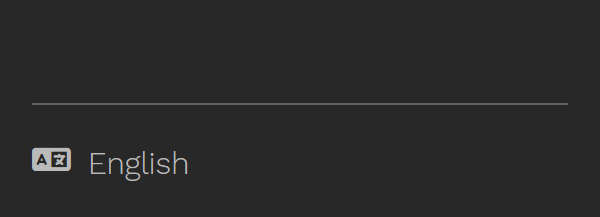Multilingual and i18n
The Relearn theme is fully compatible with Hugo multilingual mode.
- Available languages: Arabic, Simplified Chinese, Traditional Chinese, Czech, Dutch, English, Finnish, French, German, Hindi, Hungarian, Indonesian, Italian, Japanese, Korean, Polish, Portuguese, Romanian, Russian, Spanish, Swahili, Turkish, Vietnamese. Feel free to contribute!
- Full support for languages written right to left
- Automatic menu generation from multilingual content
- In-browser language switching
Basic configuration
After learning how Hugo handle multilingual websites, define your languages in your hugo.toml file.
For example with current English and Piratized English website.
Make sure your default language is defined as the first one in the [languages] array, as the theme needs to make assumptions on it
defaultContentLanguage = 'en'
[languages]
[languages.en]
languageName = 'English'
title = 'Hugo Relearn Theme'
weight = 1
[languages.pir]
languageName = 'Arrr! Pirrrates'
title = "Cap'n Hugo Relearrrn Theme"
weight = 2defaultContentLanguage: en
languages:
en:
languageName: English
title: Hugo Relearn Theme
weight: 1
pir:
languageName: Arrr! Pirrrates
title: Cap'n Hugo Relearrrn Theme
weight: 2{
"defaultContentLanguage": "en",
"languages": {
"en": {
"languageName": "English",
"title": "Hugo Relearn Theme",
"weight": 1
},
"pir": {
"languageName": "Arrr! Pirrrates",
"title": "Cap'n Hugo Relearrrn Theme",
"weight": 2
}
}
}Then, for each new page, append the id of the language to the file.
- Single file
my-page.mdis split in two files:- in English:
my-page.md - in Piratized English:
my-page.pir.md
- in English:
- Single file
_index.mdis split in two files:- in English:
_index.md - in Piratized English:
_index.pir.md
- in English:
Be aware that only translated pages are displayed in menu. It’s not replaced with default language content.
Use slug frontmatter parameter to translate urls too.
Search
In case each page’s content is written in one single language only, the above configuration will already configure the site’s search functionality correctly.
Although the theme supports a wide variety of supported languages, the site’s search via the Lunr search library does not. You’ll see error reports in your browsers console log for each unsupported language. Currently unsupported are:
- Czech
- Indonesian
- Polish
- Swahili
Search with mixed language support
In case your page’s content contains text in multiple languages (e.g. you are writing a Russian documentation for your english API), you can add those languages to your hugo.toml to broaden search.
[params]
additionalContentLanguage = ['en']params:
additionalContentLanguage:
- en{
"params": {
"additionalContentLanguage": [
"en"
]
}
}As this is an array, you can add multiple additional languages.
Keep in mind that the language code required here, is the base language code. E.g. if you have additional content in zh-CN, you have to add just zh to this parameter.
Overwrite translation strings
Translations strings are used for common default values used in the theme (Edit button, Search placeholder and so on). Translations are available in English and Piratized English but you may use another language or want to override default values.
To override these values, create a new file in your local i18n folder i18n/<idlanguage>.toml and inspire yourself from the theme themes/hugo-theme-relearn/i18n/en.toml
Disable language switching
Switching the language in the browser is a great feature, but for some reasons you may want to disable it.
Just set disableLanguageSwitchingButton=true in your hugo.toml
[params]
disableLanguageSwitchingButton = trueparams:
disableLanguageSwitchingButton: true{
"params": {
"disableLanguageSwitchingButton": true
}
}